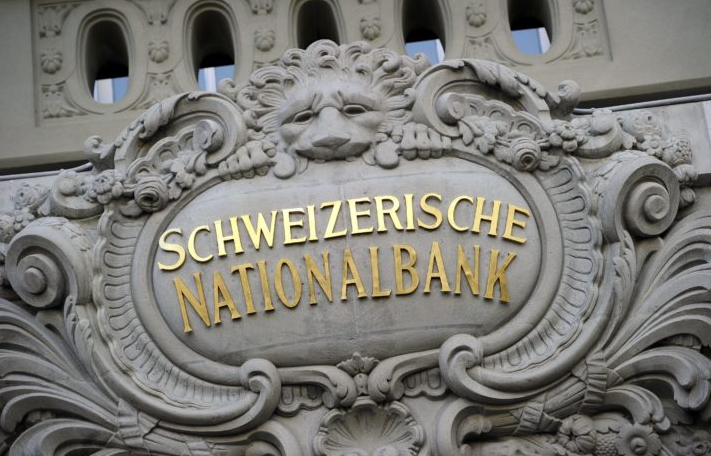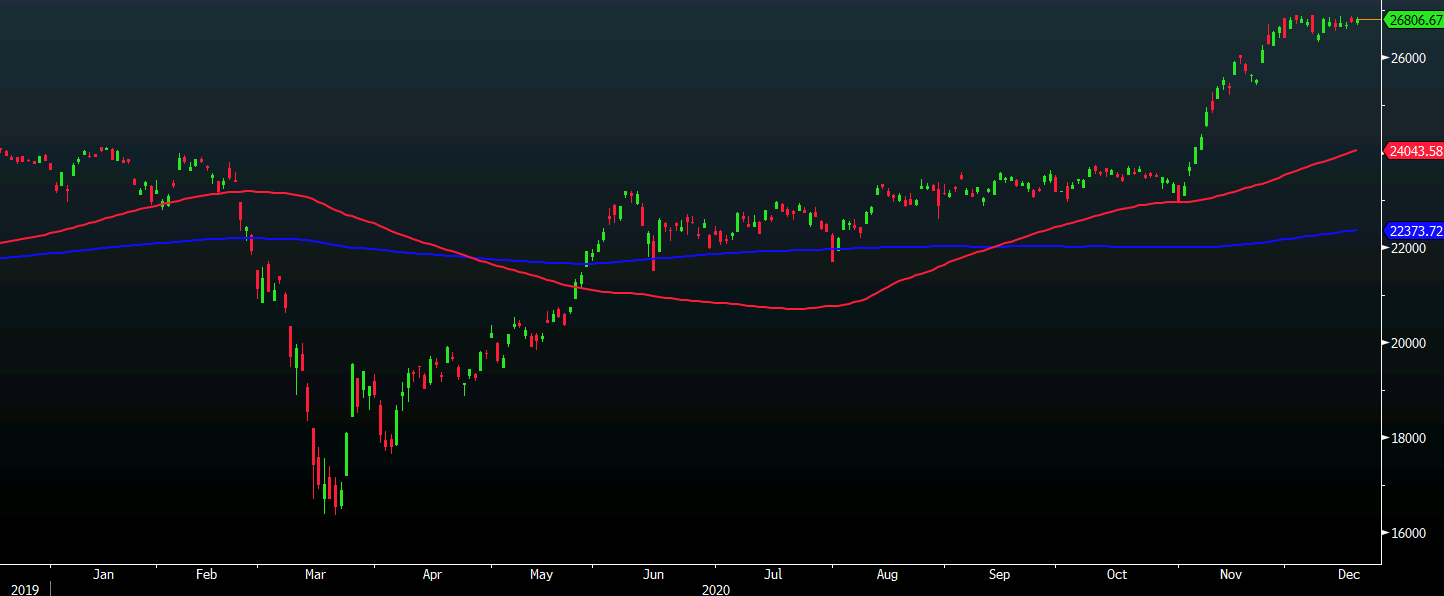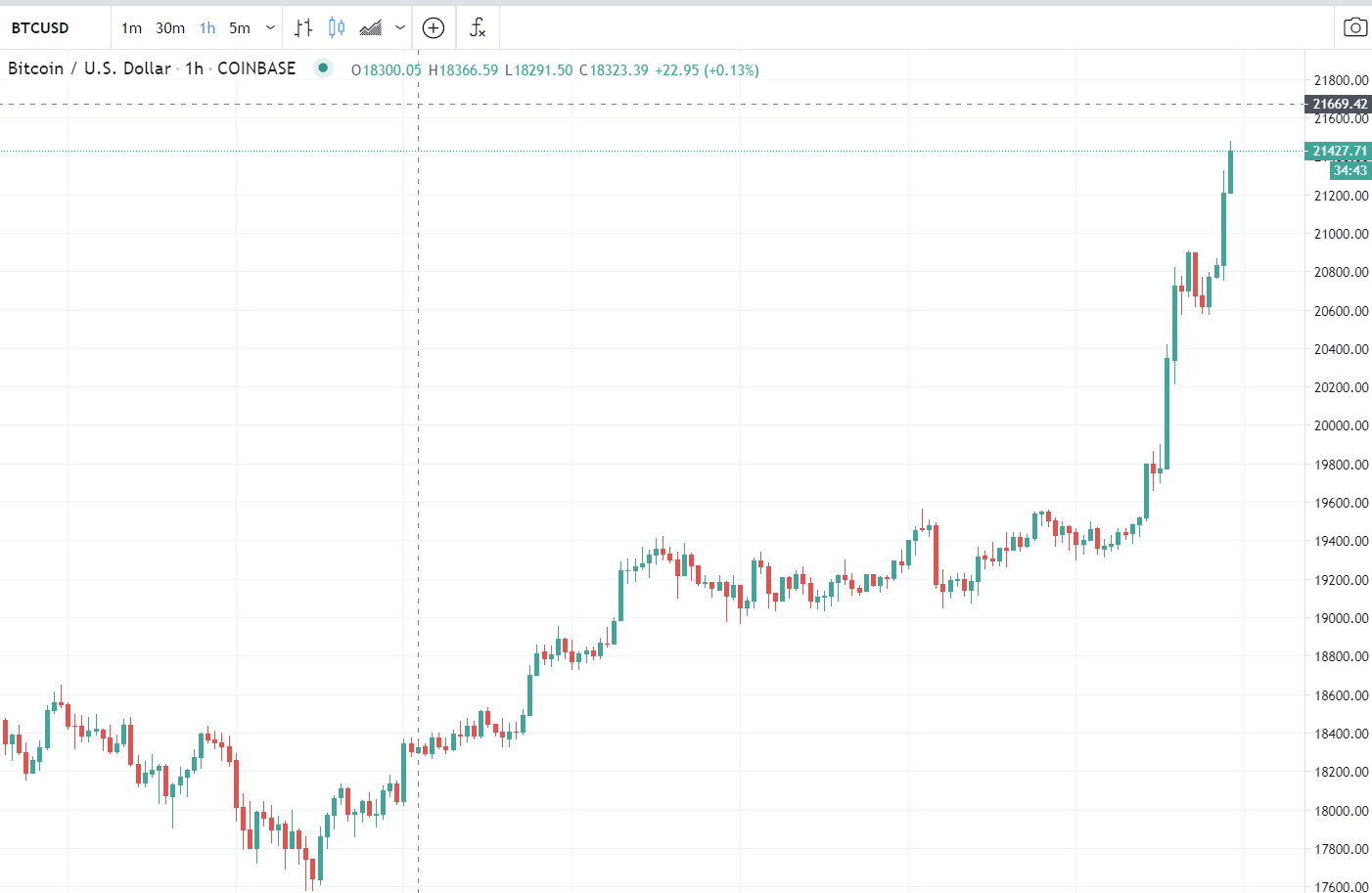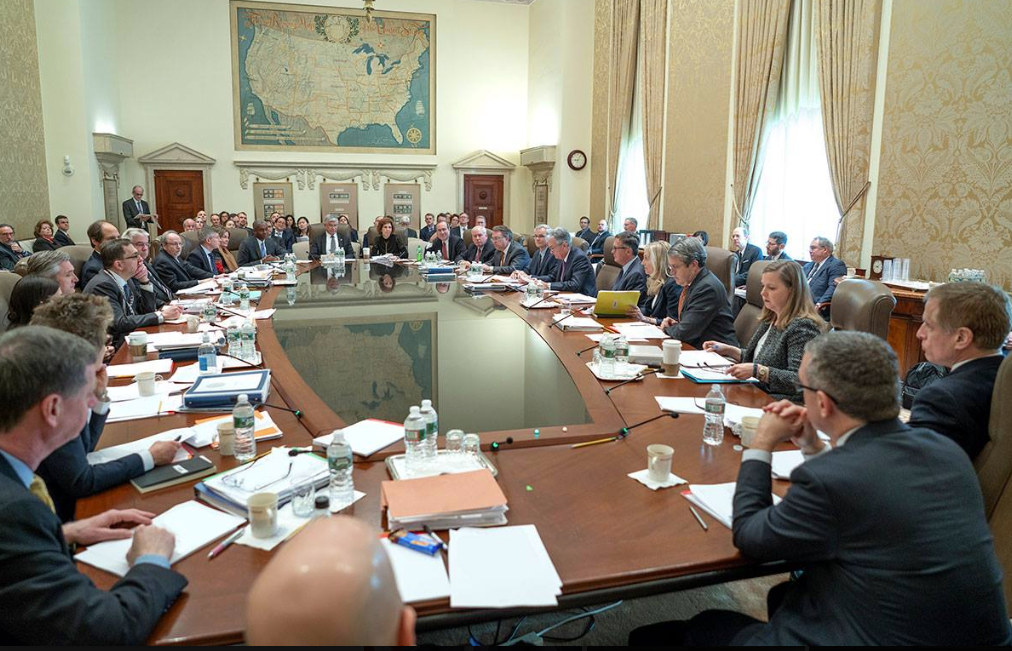Archives of “December 17, 2020” day
rssGold hits one-month high with US stimulus deal in sight
Gold higher in third day of gains

Trump: Stimulus talks looking very good
Comment from the President

SNB leaves policy rate unchanged at -0.75%
SNB announces its latest monetary policy decision – 17 December 2020

- Prior -0.75%
- Sight deposit interest rate unchanged at -0.75%
- Swiss franc is highly valued
- Will remain active in FX market as necessary
- Expansionary policy provides favourable financing conditions
- Also counters upward pressure on Swiss franc
- Sees inflation this year at -0.7%, 2021 at 0.0%, 2022 at +0.2%
- Assumption is there will not be significant easing on virus measures until spring
- Recovery thus remains incomplete
- Global economy is still subject to high uncertainty
- Full statement
Nikkei 225 closes higher by 0.18% at 26,806.67
Asian equities keep higher after the Fed yesterday

The Bank of England and Swiss National Bank both have monetary policy meetings Thursday 17 December 2020
There is no change in policy expected from the BoE or the SNB.
- The Swiss National Bank announcement is due at 0830 GMT
- The Bank of England is due at 1200 GMT
US FDA welcomes extra doses of Pfizer COVID-19 vaccine, sees potential 40% boost to supply
US Food and Drug Administration:
- says Pfizer vaccine vials hold extra doses, expanding supply
- says “given the public health emergency, FDA is advising that it is acceptable to use every full dose obtainable”
- pharmacists have found a way to squeeze extra doses out of vials of Pfizer’s vaccine, potentially expanding nation’s scarce supply by up to 40%
Report from Politico, via Reuters
Fundamental valuation of Bitcoin is USD 400,000
Guggenheim Global Chief Investment Officer Scott Minerd comments on Wednesday in a Bloomberg interview
- says his team’s fundamental work suggests Bitcoin should be worth $400K
- “It’s based on the scarcity and relative valuation such as things like gold as a percentage of GDP. So you know, Bitcoin actually has a lot of the attributes of gold and at the same time has an unusual value in terms of transactions.”
- A Guggenheim fund may invest up to 10% of assets in bitcoin
- Bitcoin breaks above $20,000 for the first time ever.

FOMC statement: Will continue pace of bond buys until ‘substantial’ progress on goals
Highlights of the December 16, 2020 FOMC statement

- No change in weighted average maturity of portfolio
- Rates left unchanged at 0.00%-0.25%
- Interest on excess reserves % vs +0.10% expected
- Repeats that “committed to using its full range of tools to support the U.S. economy”
- Will continue to buy $80B/month in Treasuries and $40B/month in MBS
- Will continue bond buys “until substantial further progress has been made toward the Committee’s maximum employment and price stability goals.”
- Repeats that “The ongoing public health crisis will continue to weigh on economic activity, employment, and inflation in the near term, and poses considerable risks to the economic outlook over the medium term”
- Dot plot at end of 2023 remains at zero.
- Full text
FOMC statement from the December 16 rate meeting
No change in rates
The Federal Reserve is committed to using its full range of tools to support the U.S. economy in this challenging time, thereby promoting its maximum employment and price stability goals.
The COVID-19 pandemic is causing tremendous human and economic hardship across the United States and around the world. Economic activity and employment have continued to recover but remain well below their levels at the beginning of the year. Weaker demand and earlier declines in oil prices have been holding down consumer price inflation. Overall financial conditions remain accommodative, in part reflecting policy measures to support the economy and the flow of credit to U.S. households and businesses.
The path of the economy will depend significantly on the course of the virus. The ongoing public health crisis will continue to weigh on economic activity, employment, and inflation in the near term, and poses considerable risks to the economic outlook over the medium term.
The Committee seeks to achieve maximum employment and inflation at the rate of 2 percent over the longer run. With inflation running persistently below this longer-run goal, the Committee will aim to achieve inflation moderately above 2 percent for some time so that inflation averages 2 percent over time and longer-term inflation expectations remain well anchored at 2 percent. The Committee expects to maintain an accommodative stance of monetary policy until these outcomes are achieved. The Committee decided to keep the target range for the federal funds rate at 0 to 1/4 percent and expects it will be appropriate to maintain this target range until labor market conditions have reached levels consistent with the Committee’s assessments of maximum employment and inflation has risen to 2 percent and is on track to moderately exceed 2 percent for some time. In addition, the Federal Reserve will continue to increase its holdings of Treasury securities by at least $80 billion per month and of agency mortgage-backed securities by at least $40 billion per month until substantial further progress has been made toward the Committee’s maximum employment and price stability goals. These asset purchases help foster smooth market functioning and accommodative financial conditions, thereby supporting the flow of credit to households and businesses. (more…)
